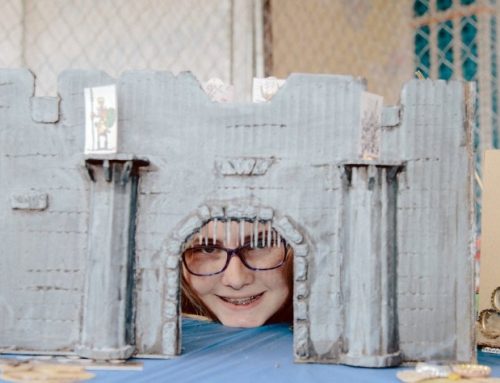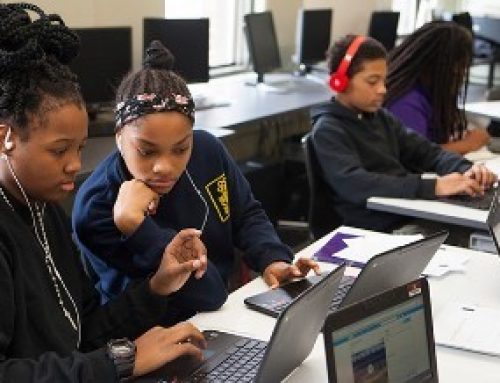
As anyone who gets our newsletter will know we’ve been stewing on big questions, and coming to some difficult conclusions. This has involved saying some things out loud which previously we kept among ourselves about the state and status of creativity in schools.
First we tested the ground: “We’re not big fans of D&T as a subject”. As this was to a Design & Technology teacher about to get involved with our teacher CPD offer it felt borderline outrageous.
Obviously emboldened by breaking that barrier, we then dismissed the STEM/STEAM/STEAMD debate as “a massive distraction”. To a large audience of probable STEAM advocates at the rather brilliant Festival of Making in Blackburn.
Finally today in the V&A symposium on embodied learning, our co-founder Daniel Charny posed the question ‘Who needs it?’ in relation to hands on approaches and their prospects in education. We are convinced that the world needs it; those who hold power don’t share that view. The skills and approaches we advocate for and see as central to 21st Century life, specifically a creative, hands on, problem solving mindset, which in subject terms crosses design, technology, engineering and the humanities (something we would call ‘Applied Creativity’) aren’t recognised or valued in English education today. Our message is popular and our programmes are held up as case studies around the world; we win prizes, but we’re a feel-good factor. In reality we’re outliers to the point of being isolated.
We’ve been determined to deliver value and support within the existing system, to work with the heroic teachers, headteachers and schools who are committed to and working incrementally toward the same goals – there’s not a lot of them, but they’re out there. What we haven’t said explicitly is that this is what we’re doing while we wait for the revolution. We see the current system as so spectacularly deficient in relation to what might be needed, that it’s not about influencing and tweaking, it’s about complete reinvention.
Let’s expand on these statements from our point of view.
We find it difficult to advocate for D&T as a subject
Design & Technology is the anchor subject for anything related to ‘the thinking hand’ at GCSE level. It’s a subject unequivocally in decline; numbers have crashed and teacher recruitment and retention is at crisis levels. With the massive caveat that we support D&T through our materials and training, and above all applaud the teachers and schools we work with who are committed to representing this branch of knowledge and skills, we have to say we can see why it’s crashing. There are some unfortunate circumstances to acknowledge, including the eBacc, but really its decline is because it has struggled to find its place as a modern subject. It has built in issues worth essays in their own right, but we can summarise our take on D&T at GCSE level as follows:
- It’s impossibly broad
- In the context of this breadth its almost absurdly commercial/professional in its focus
- It suffers from delivery as a subject when many of the concepts and skills it relates to are cross curricular and cross disciplinary in nature
The wider context of this is the mutation of design as a practice in the last 20 years; designers used to design cars and chairs, now they also design strategies and systems. Engineers, technologists and programmers use design but don’t consider themselves designers. Making things still has huge relevance, but focusing those skills on designing commercial products for industrial manufacture less and less.
The STEM/STEAM/STEAMD debate is a massive distraction
The two cultures arts vs sciences debate didn’t start with CP Snow and won’t end anytime soon. But how it manifests currently in the STEM vs STEAM debate is miserable, time consuming and ineffective for too many reasons to recount fully. A start though would be that the acronyms are practically meaningless – STEM is not taught as a subject and encompasses subjects, disciplines and practices which are already diverse, resistant to reduction through acronymisation, and often hugely creative in content and practice. In that context STEAM makes even less sense, and it doesn’t take much research to see that advocates differ wildly in its interpretation. The effect of the debate meanwhile is to polarise us. Across the board we are suffering from misunderstanding, misrepresentation and sidelining – this is what happens when education budgets are systematically slashed and ideologically driven values and cultures are imposed (testing, testing). To exhaust ourselves climbing over our peers for minimal benefit can’t be the way forward. Finding shared cause must be.
Applied Creativity – no one (thinks they) need it
At first glance we’re the problem here. Our vision for learning doesn’t play out in subjects, nor is it at its best when its confined to the classroom. The term we’ve arrived at to describe what we advocate is Applied Creativity, and we use this term to describe the creative, hands on, problem solving mindset which might encompass design, engineering, maths, physics, computing, coding, creative and design thinking, certainly includes making, and draws on artistic and humanities practices for good measure,
While this resourceful, ingenious mindset, knowledge and skills isn’t cultivated in a traditional classroom with ease, or cheaply it has to be said, it is essential to engaging with the types of complex problems which we, and our future workforces and citizens will face. To ignore the possibility on the basis that they’re too complicated or costly to deliver is a false economy; this approach to learning we can afford to run if we choose, and can’t afford to ignore.
Why revolution?
The challenges we face, from resource scarcity to global emissions, mass movements of people and ageing populations require creativity, ingenuity and sensitivity. Meanwhile machine intelligence (computers, software, robotics, artificial intelligence) is advancing at a blistering pace. The world is a place of radical change – social, political, technological and economic – and increasing need; it’s only logical that the education system which serves it must change in response.
We’re first to admit that we don’t know what the blueprint is. There are people more qualified than us to comment on the education system in its entirety, with all the requirements and responsibilities it serves. We do know a lot about creativity and design skills, and can pass judgement on how secondary level, FE and HE serve as a pipeline for creative industries and those many industries and institutions which rely on creativity and ingenuity to deliver good work. We know that it’s not working, and we’re not alone.
Changes in education take decades not years to implement, and we don’t have the luxury of time. We’re seeing fragmentation and infighting, well meaning advocates making noise (that’s us) and the vultures of commercial suppliers hovering. We think it’s time to turn up the volume.
So what now?
There’s lots of debate about creativity in schools, linked usually to workplace skills, the Industrial Strategy and/or pressures like the eBacc, but an absence of the kindof creative dialogue which looks past patching up or supplementing existing models toward something new. We want to explore a unifying agenda of applied creativity – something which can bridge STEM & STEAM, design and technology, economic and social purposes – and new models which respond to a changing world.
- We plan to convene a conversation between providers who are exploring this landscape to better describe the opportunities
- We aim to present findings and widen the conversation to include a wider field of expert practitioners, institutions and policy makers
- We will turn the results into materials which can find a wider audience and support the change we need
Then who knows – a network, a working group, a movement? Something needs to give.
We’re seeking allies, partners and change makers. While we find them, and the funding we need, why not watch our film from FixCamp last year. It never fails to remind us why we’re doing this.




